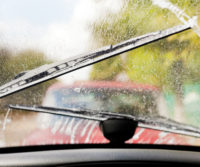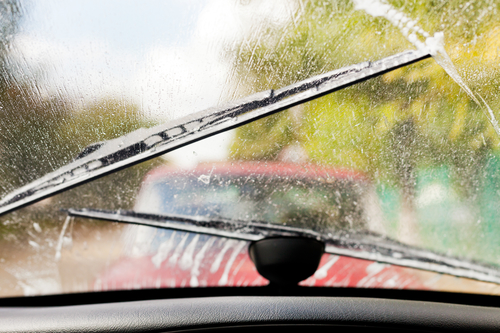End of Summer Marks Perfect Time for Car Care
Preventative maintenance now can help ensure worry-free driving this winter The vacations are over, the kids are back in school […]
READ MORE -The vacations are over, the kids are back in school and cooler evenings have begun. Take advantage of the lull to prepare your vehicle for the winter ahead, advise the pros and the non-profit National Institute for Automotive Service Excellence (ASE). Breakdowns, never convenient, can be dangerous in cold weather period.
The following tips from ASE should give parent and student alike a road map to fall car care.
Read your owner’s manual and follow the manufacturer’s recommended service schedules. There are usually two schedules listed: normal and severe.
Have engine driveability problems (hard starts, rough idling, stalling, diminished power, etc.) corrected at a good repair shop. Cold weather will make existing problems worse. Replace dirty filtersair, fuel, PCV, etc.
Put a bottle of fuel de-icer in your tank once a month to help keep moisture from freezing in the fuel line. Note, too, that a gas tank that’s kept filled helps prevent moisture from forming in the first place.
Change your oil and oil filter as specified in your manual more often (every 3,000 miles or so) if your driving is mostly stop-and-go or consists of frequent short trips.
The cooling system should be flushed and refilled as recommended. The level, condition, and concentration of the coolant should be checked periodically. (A 50/50 mix of anti-freeze and water is usually recommended.) If you’re doing your own work, allow the radiator to cool down completely before removing the cap. (Newer vehicles have coolant reservoirs.) The tightness and condition of drive belts, clamps, and hoses should be checked by a certified auto technician.
The heater and defroster must be in good working condition for passenger comfort and driver visibility.
Replace old blades. If your climate is harsh, purchase rubber-clad (winter) blades to fight ice build-up. Stock up on windshield washer solvent you’ll be surprised how much you use. Carry an ice-scraper.
The only accurate way to detect a weak battery is with professional equipment. But do-it-yourselfers can do routine maintenance. Scrape away corrosion from posts and cable connections; clean all surfaces; re-tighten all connections. If battery caps are removable, check fluid level monthly.
Be sure to avoid contact with corrosive deposits and battery acid. Wear eye protection and rubber gloves. Note too that removal of cables can cause damage or loss of data/codes on some newer vehicles so refer to your manual for instructions.
Inspect all lights and bulbs; replace burned out bulbs; periodically clean road grime from all lenses with a moistened cloth or towel. To prevent scratching, never use a dry rag.
Your vehicle should be placed on a lift and the exhaust system examined for leaks. The trunk and floorboards should be inspected for small holes. Exhaust fumes can be deadly.
Worn tires will be of little use in winter weather. Examine tires for remaining tread life, uneven wearing, and cupping; check the sidewalls for cuts and nicks. Check tire pressure once a month. Let the tires “cool down” before checking the pressure. Rotate as recommended. Don’t forget your spare, and be sure the jack is in good condition.
Carry gloves, boots, blankets, flares, a small shovel, sand or kitty litter, tire chains, a flashlight, and a cell phone. Put a few “high-energy” snacks in your glove box.
Source: ASE

 Fall has sprung. That’s a saying right? Regardless, the carefree days of summer are officially over. Fall means colder weather, hauling the kids to school, raking leaves off the lawn and a whole slough of new and exciting chores to take on with all the free time you have.
Fall has sprung. That’s a saying right? Regardless, the carefree days of summer are officially over. Fall means colder weather, hauling the kids to school, raking leaves off the lawn and a whole slough of new and exciting chores to take on with all the free time you have.
What’s one more thing you could add to the list? Help your car recover from everything it went through this summer. After vacuuming the sand out of the carpet and scrubbing suntan lotion out of the seats, add these items to the list of things to help your car move on from summer and prepare for fall.
Here’s a lineup of tips to help you and your car recover from some of summer’s most damaging effects:
Seeing tiny pieces of rubber chipping off of your wiper blades? Blame the summer sun.
The heat dries out your wipers and causes them to crack, making them ineffective. With fall weather about to hit, working windshield wipers are going to be important when it comes to visibility in wet weather. Give your wipers a once-over to see if they’re ready for a replacement.
Look for any cracks in the rubber then test them out with your wiper fluid. If you see streaking or hear a chattering noise, you’re probably ready for a new set of wipers.
Having your wipers replaced is a fairly easy and relatively cheap fix, but it makes a huge difference. Not being able to see while driving is kind of a problem, right? Don’t have time to do it yourself? Great news, we do that!
When it comes to taking one of those Great American Road Trips we always remember the good times, thanks to all the pictures, videos, and funny stories. But there aren’t too many people who like to recall the time their car broke down in the middle of nowhere.
Oh, and if that pesky check engine light flares to life at any time during or after your trip, be sure to bring your vehicle in for an inspection as soon as you can. It’s better (and typically cheaper) to catch something when it’s small than to wait and hope nothing goes wrong.
Pop quiz: Can you name the outside force that can affect a battery’s lifespan more than anything else? Go ahead, take a minute. We’ll still be here.
You probably already know the answer, but just in case, it’s extreme temperatures.
Heat from the summer sun is known to cause more corrosion and general wear and tear than extreme cold. We can run a simple health test on your battery now to help you avoid having to ask a stranger for a jump later.
It comes as no shock that driving wears down a tire, but did you know heat can cause expedited tread loss?
When you get close to 3-digit temperatures, tire pressure has a tendency to rise in tires. Not sure how much tire pressure is right for your tire? For most automobiles, the recommended pressure levels can be found on the inside of the driver-side door.
Not sure what else your car might need to recover from summer? That’s okay, there’re a lot of moving parts (literally). Fortunately, we’re more than happy to help.
Bring your ride down to our shop, then, when we’re done, you can check out the fall colors with confidence.
Article Source: Good Year Auto Service